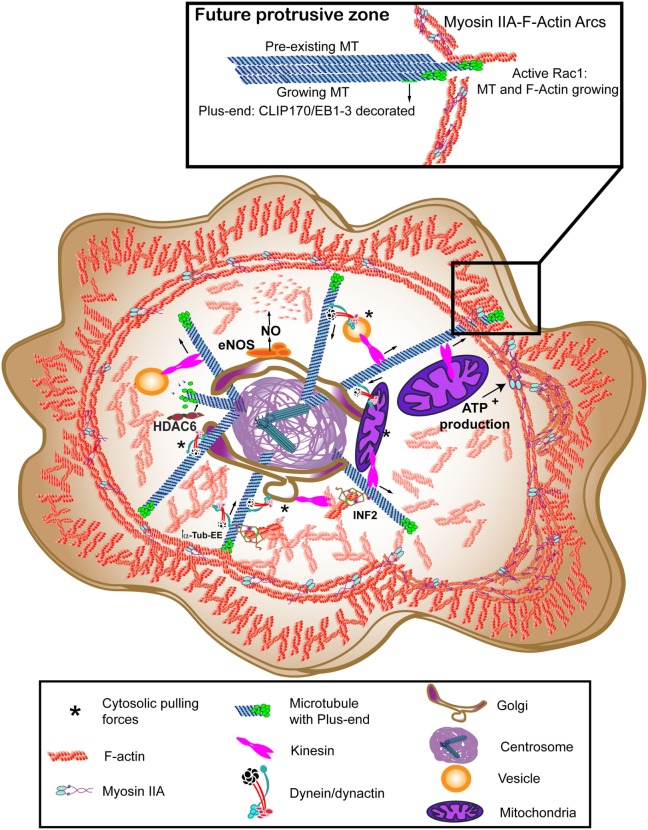Figure 2.
Molecular motors at motion to rearrange the cytoskeleton at the immune synapse (IS). Myosin IIA provides the lymphoctye function-associated antigen-1 (LFA-1)-dependent actin ring with contractile activity, thereby helping the centripetal movement of surface proteins. Dynein/dynactin may interact directly with receptors or move vesicles to allow recycling, walking toward the minus-end of microtubules (MTs) (centrosome). Kinesin-1 helps the traffic from the centrosome to the periphery. Vesicular traffic allows secretion and mitochondria can provide the adenosine tri-phosphate (ATP) needed for Myosin IIA activation. The forces exerted by these motors between the organelles and the cytoskeleton constitute the cytosolic pulling forces, that may provide a docking mechanism for the centrosome. The translocated centrosome provides the IS with multiple signaling, scaffold and modifying proteins that can regulate relevant post-translational modifications (PTMs) for actin or tubulin cytoskeletons, such as endothelial nitric oxide synthase (eNOS) for β-actin nitrosylation, histone deacetylase 6 (HDAC6) for deacetylation, or inverted formin-2 (INF2) to allow detyrosination of MTs. The images in the figure are not scaled.

